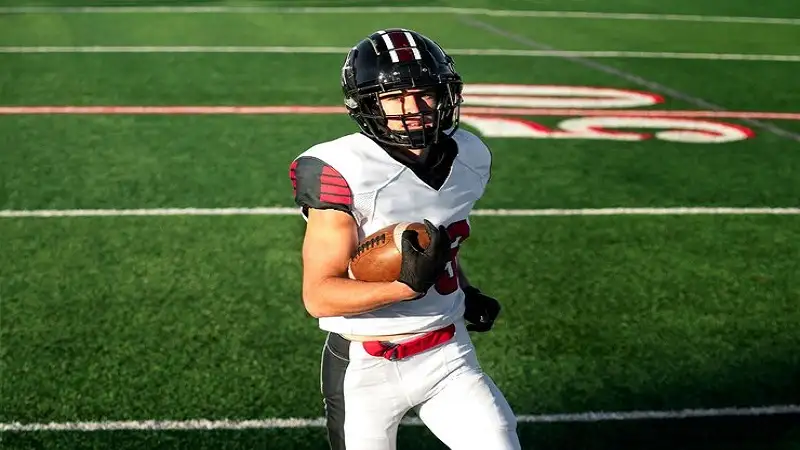The National Football League R NFL often referred to as the heart of American sports, is a powerhouse of entertainment, competition, and tradition. Whether you’re a lifelong fan or new to the sport, understanding the R NFL structure, history, and cultural impact can enhance your appreciation for the game. This article explores various aspects of the NFL, providing insights into its fascinating world.
The Origins and Evolution of the NFL
The NFL was established in 1920 as the American Professional Football Association (APFA), later renamed the National Football League in 1922. Initially a modest league with a handful of teams, the NFL has grown into a multi-billion-dollar organization with 32 franchises.
Key Milestones in NFL History:
- The Merger with the AFL (1970): This union created the modern R NFL, divided into two conferences—the American Football Conference (AFC) and the National Football Conference (NFC).
- The Super Bowl Era: Beginning in 1967, the Super Bowl became the pinnacle of American sports, attracting millions of viewers annually.
- Technological Advancements: From instant replays to helmet communication systems, the NFL has consistently embraced innovation to improve the game.
The Structure of the NFL
The NFL operates with a meticulously planned framework to ensure fairness, competitiveness, and profitability.
- The League’s Conferences and Divisions
The NFL is split into two conferences, each with four divisions. Each division comprises four teams, making up the 32-team league. - The Regular Season and Playoffs
Teams compete in a 17-game regular season, aiming to secure a playoff spot. The postseason features the best teams in a single-elimination format leading to the Super Bowl. - The Draft and Player Development
The NFL Draft, held annually, is the league’s primary method for recruiting young talent. Teams select college players in a structured order, promoting parity across the league.
The Cultural Impact of the NFL
The R NFL influence extends beyond the field, shaping American culture in numerous ways.
- A National Pastime
From Sunday tailgates to Monday Night Football, the NFL has become an integral part of American life. Super Bowl Sunday is unofficially recognized as a national holiday. - Pop Culture and Marketing
The league’s stars are household names, featuring in advertisements, movies, and social campaigns. Halftime shows, particularly during the Super Bowl, attract global attention. - Social Movements
The NFL has also been a platform for social issues, such as players protesting against racial injustice, sparking nationwide conversations.
Behind the Scenes: How the NFL Runs
Running a league of this scale involves intricate logistics, management, and strategic planning.
- Revenue Streams
The NFL generates income through ticket sales, broadcasting rights, merchandise, and sponsorships. TV deals alone contribute billions annually. - Team Ownership
NFL teams are owned by wealthy individuals or family-run enterprises, with each franchise valued at billions. Owners play a crucial role in shaping the league’s direction. - Player Salaries and Contracts
Players’ earnings are negotiated based on their skill, experience, and marketability. The salary cap ensures balanced spending among teams.
The Science Behind the Game
Football isn’t just brute force; it’s a game of strategy, skill, and science.
- Training and Fitness
Players undergo rigorous training regimens to maintain peak physical and mental performance. Advanced sports science plays a significant role in injury prevention and recovery. - Technology on the Field
From helmet sensors to performance analytics, technology has revolutionized how the game is played and coached. - Rules and Officiating
The R NFL rulebook is detailed, ensuring fair play and player safety. Officials are trained extensively to make accurate calls, with video reviews adding an extra layer of scrutiny.
The Globalization of the NFL
While deeply rooted in America, the NFL has been making strides to expand its international presence.
- International Games
The NFL hosts regular-season games in London, Mexico, and Germany, attracting fans from across the globe. - Marketing Initiatives
Programs like NFL International Pathway aim to discover and develop talent from countries outside the U.S. - Merchandise and Media
The league’s global merchandise and streaming platforms allow international fans to connect with the NFL community.
Challenges Facing the NFL
Despite its success, the NFL faces several challenges that could shape its future.
- Player Safety Concerns
Head injuries and chronic traumatic encephalopathy (CTE) remain significant issues. The league has implemented measures, but debates around player safety persist. - Social and Political Controversies
The NFL has been at the center of controversies involving player protests and league policies, often drawing polarized reactions. - Competition and Viewership Trends
With the rise of esports and other entertainment options, the NFL must adapt to maintain its audience, particularly among younger generations.
The Future of the NFL
- Technological Innovations
Virtual reality experiences, advanced analytics, and enhanced broadcasting methods could redefine how fans interact with the game. - Sustainability Efforts
From eco-friendly stadiums to community outreach programs, the NFL is focusing on sustainability to resonate with modern values. - Diversity and Inclusion
The league is working to ensure representation at all levels, from players to coaches and executives.
Conclusion: The Enduring Legacy of the NFL
The R NFL isn’t just a sports league; it’s a cultural phenomenon, a business empire, and a source of inspiration for millions. As it continues to evolve, the league’s rich history and forward-thinking approach ensure that it remains at the forefront of global sports entertainment. Whether you’re a casual viewer or a die-hard fan, the NFL offers something for everyone—a testament to its enduring appeal.

